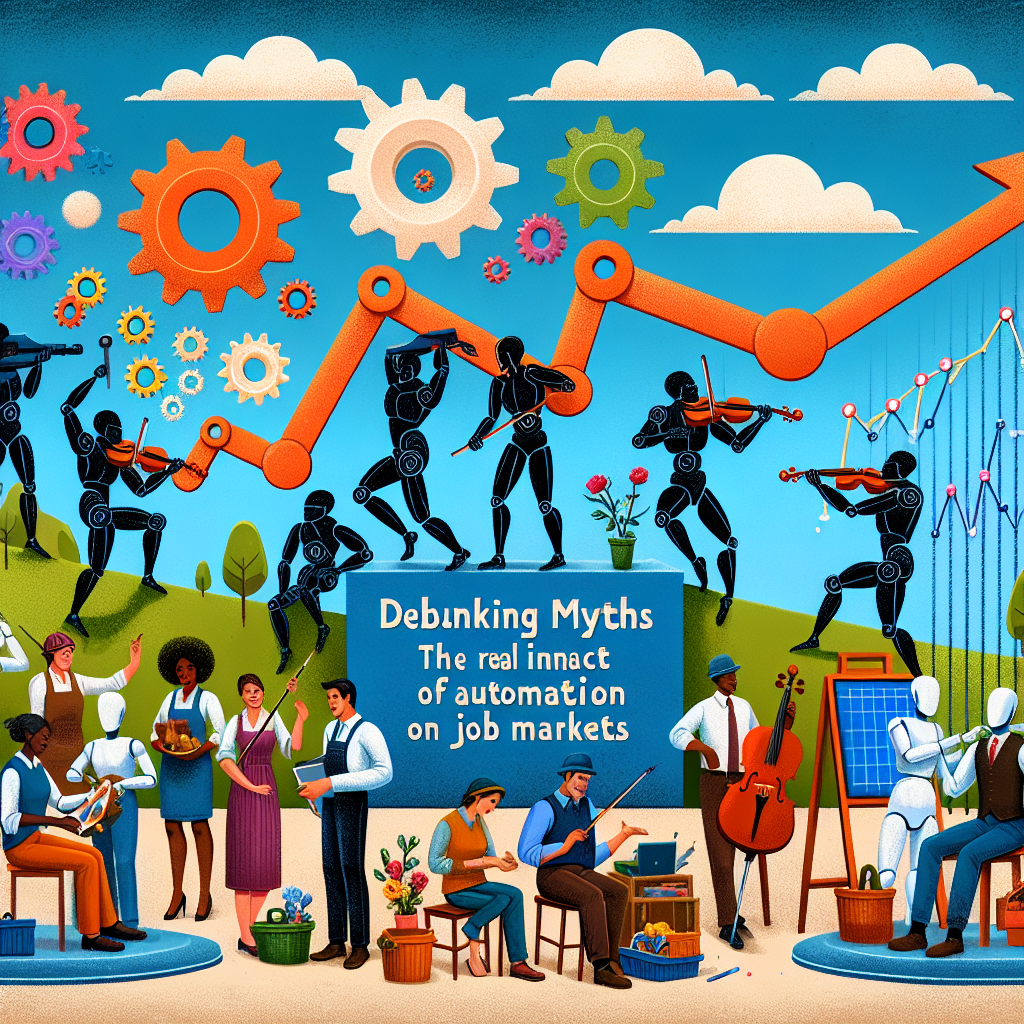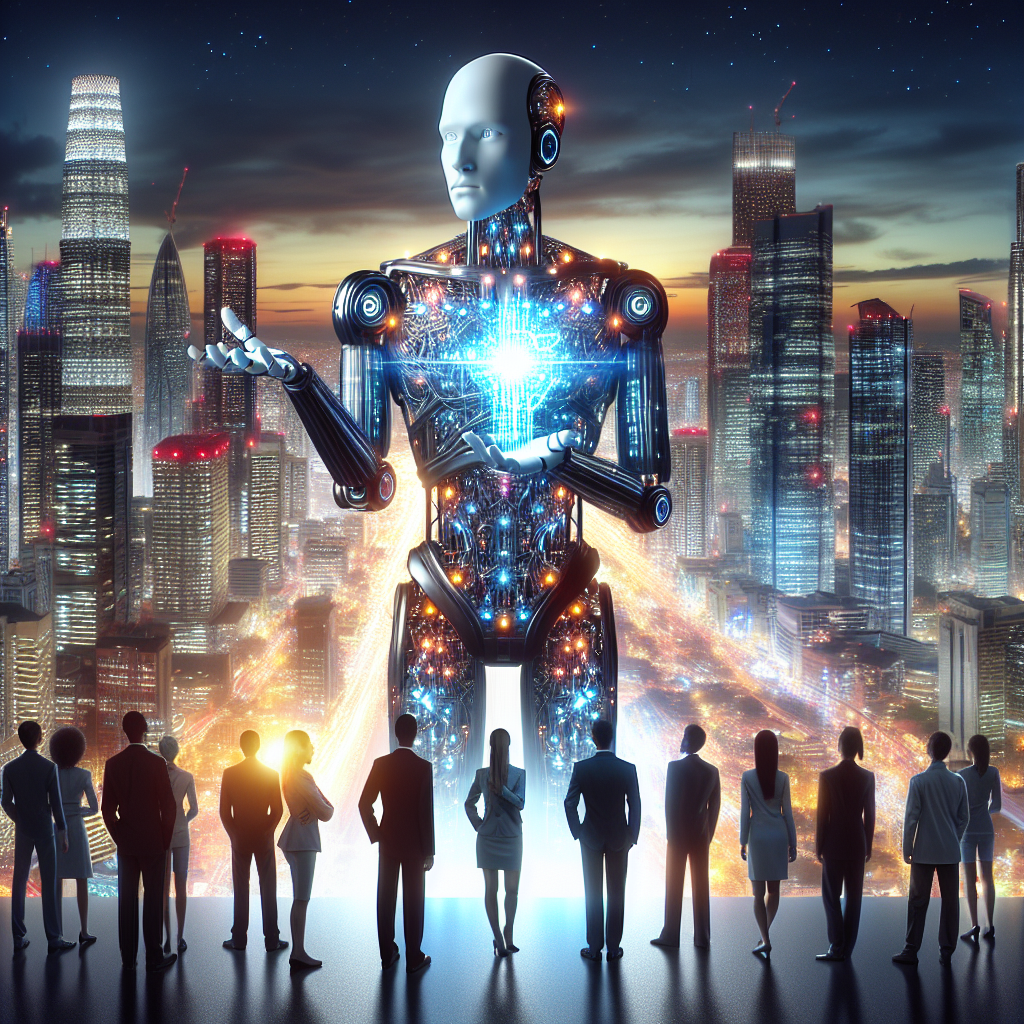Automation has become a buzzword in recent years, often used to describe the technological advancements that streamline processes and improve efficiency across various industries. While this transition is not new—the industrial revolution sparked massive changes in job markets—today’s automation is powered by artificial intelligence, robotics, and machine learning, creating both excitement and anxiety regarding its impact on employment. Amidst the noise, several myths about automation and job markets persist. This article aims to debunk these myths and shed light on the real impact of automation on employment.
Myth 1: Automation Will Lead to Massive Job Losses
One of the most pervasive myths surrounding automation is the fear that it will lead to widespread job losses across all sectors. While it is true that automation has the potential to displace certain jobs, it is essential to understand the context. Historically, technological advancements have resulted in job transformation rather than outright elimination. According to a study by the World Economic Forum, while 85 million jobs may be displaced by 2025 due to automation, 97 million new roles could emerge, particularly in areas like data analysis, AI development, and green energy.
The Reality:
Jobs are evolving. Automation tends to replace repetitive, manual tasks, but it also creates opportunities for new industries and roles that require human oversight, creativity, and emotional intelligence. Upskilling and reskilling will be crucial in preparing the workforce for these transitions, allowing individuals to thrive in emerging job markets.
Myth 2: Only Low-Skilled Jobs Are at Risk
Another misconception is that automation is an equal-opportunity disruptor, primarily threatening low-skilled jobs such as assembly line work and data entry. While these positions are indeed susceptible, the reality is that automation impacts a wide range of job categories, including those requiring specialized skills or higher education.
The Reality:
Routine tasks in various professions—whether in finance, healthcare, manufacturing, or even law—are being automated. For instance, algorithms can analyze legal documents faster and more accurately than a junior lawyer. This doesn’t mean that lawyers will disappear; rather, they will need to adapt by focusing on more complex aspects of their work, like strategy and client interactions. Highly skilled workers may find themselves augmenting their roles with technology rather than being replaced by it.
Myth 3: Automation Equals Unemployment
Many fear that as machines take over tasks, unemployment rates will soar. However, the relationship between automation and employment is not as straightforward as the myth suggests. Jobs may change, but this does not necessarily correlate with a proportional rise in unemployment.
The Reality:
Economic history shows that technological advancements often lead to greater productivity, which in turn stimulates demand for goods and services. This demand can generate new jobs that did not previously exist. A case in point is the rise of the gig economy, which has created flexible work options and new income opportunities for millions. While certain traditional roles may diminish, new avenues are continually emerging—serving as a buffer against mass unemployment.
Myth 4: Automation Will Eliminate Human Workers Entirely
A common fear is that automation will ultimately make human labor obsolete. While it’s true that machines can perform specific tasks faster and with greater precision than humans, the notion that technology will entirely replace human workers is a fundamental misunderstanding of the value humans bring to the workplace.
The Reality:
Machines excel at repetitive, well-defined tasks, but human workers possess qualities that are difficult to automate, such as creativity, problem-solving, emotional intelligence, and cultural understanding. In many cases, automation augments human capabilities, allowing workers to focus on more complex, high-value activities. For example, healthcare professionals have increasingly integrated AI tools into diagnostics, enabling them to make more informed decisions while spending more time interacting with patients.
Myth 5: Only Technology Companies Will Benefit from Automation
Finally, there is a widespread belief that only tech companies will reap the rewards of automation. While it is true that companies like Google, Amazon, and Tesla are leading the charge in implementing automation technologies, the benefits extend far beyond the tech sector.
The Reality:
Automation is transforming various industries, from agriculture to construction. Smart farming technologies enhance productivity and reduce waste, while automated machinery in manufacturing increases efficiency and safety. Small businesses can also leverage affordable automation tools to streamline operations, significantly leveling the playing field. The impact of automation is, therefore, pervasive across all sectors, benefiting regional economies and communities by fostering innovation and growth.
Conclusion: Embracing a Balanced Perspective
Understanding the real impact of automation on job markets requires a balanced perspective. While fears of job loss and obsolescence are valid, they often overlook the transformative potential of technology. Instead of viewing automation as a foe, it can be perceived as an ally that drives progress and innovation.
Preparation will be key. As workers and businesses adapt, investing in education, training, and lifelong learning becomes critical. Policymakers must also play a role by creating supportive frameworks that help navigate this transition, ensuring that the workforce is equipped to thrive in an automated future.
In an era defined by rapid technological advancements, embracing change with a proactive mindset will empower individuals and organizations alike to harness the potential of automation, ultimately benefiting society as a whole.




